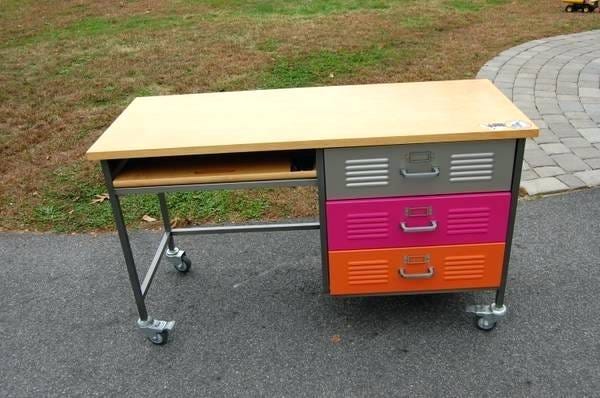
In an episode of The Simpsons that aired last December, Homer Simpson took Lisa to Springfield Mall. The episode provided an opportunity for the two characters to bond – and it was also a perfect opportunity to slip some puns into the background.
At one point, Lisa and Homer pass a furniture store full of bland throw pillows, sofas, and vases, complete with a faux barn door. Its name, ‘P O V E R T Y B A R N,’ was spelled out in familiar serifed letters.
Actually, what the show’s writers may or may not have realized is that Pottery Barn’s founders called it that themselves.

The thought associating Pottery Barn, an expensive store that sells bulky furniture to people who own houses, with poverty is inherently gross. The store, and its nickname, began in 1949, when Paul Secon and his brother Morris began buying and selling ceramics from upstate New York in Manhattan.
Mostly bought in bulk from rural vendors, Pottery Barn originally featured discontinued or chipped plates, mugs and serving dishes. Morris drew inspiration from his wife, who was quick to spot designer pottery at yard sales, where she could collect pieces at a rock-bottom prices.
In those early days, Pottery Barn’s typical haul would involve buying out a vendor’s entire back stock of items, often for $1 or less per item. The name was inspired by Glidden Parker, a designer who had accumulated three barns full of products that couldn’t otherwise be sold.
The business went well, so well that the Times reported near-stampedes by eager holiday shoppers in the mid-1950s. But selling heavily discounted pottery at scale was demanding work that required constant travel to source new stock. In 1968, Morris sold out to two partners.
Those partners turned out to be far savvier. They sold the company to Gap, which then scored $6 million in a 1986 sale to Williams-Sonoma, which promptly erased the brand’s history. (The company’s “About” page mentions the original pottery concept, but doesn’t name the Secon brothers or Morris’ wife, who was also unnamed in Paul’s obituary despite her influence on the business.) From there, Pottery Barn rapidly grew, with brick-and-mortar locations across the country.

Can you even imagine having enough space for two rugs, this giant sofa, nine (!) throw pillows and whatever is going on with those poufs?
In a glowing Fast Company profile from 2003, readers got to peek inside the company’s giant San Francisco warehouse (once a 28,000 square foot mayonnaise factory). There, design VP Celia Tejada insisted that designing a lifestyle brand required work-life balance. “I tell my team, ‘You will not get promoted or rewarded for working 20 hours a day,’” she told Fast Company at the time. (Tejada left the company in 2013, after more than 16 years.)
But then, as now, Pottery Barn’s lifestyle brand required constant work. Outside of the office, staff members absorbed illuminating details from their environments. Inspiration for Pottery Barn’s next hit product was thought to be lurking everywhere, in the form of a friend’s frustrations with their serving dishes, at model homes or in flea markets packed with oddities. All of those details ended up back in the studio, which was crammed with random buys, photos and magazine clippings.
This strategy helped the brand launch new product lines like PB Teen, which emerged as executives’ children began to enter adolescence. I don’t know about you, but I used to covet items like the iconic locker desks (though I never owned one):

But even if you’re a big retailer, life comes at you fast. Today, Pottery Barn is fading from the conversation, usurped by its sister store, West Elm. The culprit? Furniture shoppers who live in tiny urban spaces want vertical storage and airy midcentury pieces, not traditional looks. Williams-Sonoma now walks a careful tightrope to avoid cannibalizing sales between the two brands.
As a result, Pottery Barn now sells its own midcentury-inspired products – like this $399 desk marketed to teens – alongside bulkier furniture more in line with its heyday.

Products like this suggest that Pottery Barn’s teen line might soon exist to prime a new customer base for West Elm. But who knows – maybe one day, those teens will stick around.
Something else
By now, it’s been well-established that Guy Fieri is a solid dude. I started rewatching “Diners, Drive-Ins, and Dives” this past week, and it turns out that the noisy, over-the-top show I remember is actually a solid half-hour of Fieri validating and praising people who work hard, often in obscurity.
It’s cathartic and completely lovely to watch someone trip around the country to basically be nice to people. If you struggle to be gentle with yourself or give yourself credit, try letting some of Fieri’s good-natured enthusiasm seep into your brain. (Or, use this map to find spots featured on the show near you.)


